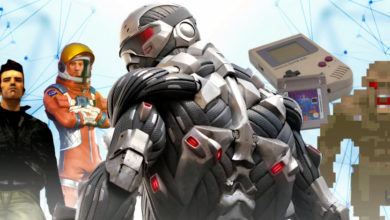Tips and Tricks for Building Your Own Indie Game from Scratch

Creating an indie game from scratch can be an exciting and fulfilling journey. Whether you’re an aspiring game developer or a hobbyist, crafting a unique gaming experience on your own terms allows for immense creativity and personal satisfaction. However, building an indie game comes with its own set of challenges, from planning and programming to marketing and monetization. In this article, we’ll explore valuable tips and tricks to help you navigate the indie game development landscape and bring your vision to life.
Understanding the Indie Game Development Landscape
What Defines an Indie Game?
Indie games are independent video games developed by individuals or small teams without the financial backing of large publishers. This independence gives creators the freedom to experiment with unconventional ideas, unique art styles, and innovative gameplay mechanics. Unlike big-budget titles, indie games often focus on storytelling, artistic expression, or niche genres, creating a diverse and rich gaming ecosystem.
See also: The Future of Financial Technology (FinTech)
Popular Genres and Styles in Indie Games
Indie developers frequently explore genres such as platformers, puzzle games, roguelikes, and narrative-driven adventures. Titles like Celeste, Hollow Knight, and Stardew Valley exemplify how indie games can achieve critical acclaim and commercial success by focusing on strong gameplay and creative design rather than flashy graphics.
Planning Your Indie Game Project
Setting Realistic Goals and Scope
One of the most common pitfalls in indie game development is overambition. It’s crucial to set achievable goals aligned with your skills and resources. Start with a minimal viable product (MVP) — a basic version of your game that highlights core mechanics and can be expanded later. This approach keeps the project manageable and prevents burnout.
Creating a Game Design Document (GDD)
A comprehensive Game Design Document is your blueprint. It outlines your game’s concept, mechanics, story, characters, art style, and sound design. Breaking down these elements helps clarify your vision and guides your development process.
Storyline and Gameplay Mechanics
Define the narrative arc if your game has a story. Detail the gameplay mechanics such as player controls, progression systems, and challenges. Will your game be fast-paced or more strategic? Clear documentation here aids in maintaining consistency throughout development.
Art Style and Audio Considerations
Decide on an art style early—pixel art, hand-drawn, 3D models, or minimalist designs all convey different moods and appeal to different audiences. Similarly, audio including music and sound effects plays a vital role in immersion and should complement the visuals and gameplay.
Essential Tools for Indie Game Development
Game Engines Suitable for Indie Developers
Choosing the right game engine can significantly impact your workflow. Popular choices include:
- Unity: Versatile with strong 2D and 3D support, extensive documentation, and a large community.
- Unreal Engine: Known for high-end graphics and Blueprints visual scripting, good for 3D-heavy games.
- Godot: Lightweight, open-source, and beginner-friendly, ideal for 2D games.
Art and Sound Creation Tools
For art creation, tools like Aseprite (pixel art), Photoshop, or Krita (digital painting) are popular. For sound, Audacity and FL Studio help with editing and composing. Many indie developers also use royalty-free sound libraries or collaborate with musicians.
Building Your Game Step-by-Step
Prototyping Your Idea Quickly
Before diving into full production, create a prototype to test core gameplay mechanics. This phase is about experimentation and iteration—don’t worry about polished visuals yet. Early prototypes can reveal design flaws and spark improvements.
Programming Basics and Scripting Tips
If you’re new to coding, start with beginner-friendly languages and tools. Unity uses C#, while Godot uses GDScript (similar to Python). Focus on understanding game loops, input handling, physics, and UI scripting. Modular code and clear comments help maintain your project over time.
Level Design and User Experience
Good level design balances challenge and fun. Design levels that gradually introduce mechanics and increase difficulty. Pay attention to user interface (UI) clarity and controls responsiveness to ensure players enjoy the experience without frustration.
Overcoming Common Challenges in Indie Game Development
Managing Time and Staying Motivated
Indie game development can be a long process. Break your work into smaller milestones and celebrate each achievement. Using project management tools like Trello or Notion can keep you organized and motivated.
Debugging and Testing Effectively
Regular testing helps catch bugs early. Use beta testers from your target audience and gather feedback to refine gameplay. Automated testing tools may also be helpful depending on your project size.
Handling Feedback and Iteration
Listen to player feedback but stay true to your vision. Not all suggestions will fit your game, but constructive criticism is invaluable for improving quality and user satisfaction.
Marketing and Launching Your Indie Game
Building an Online Presence
Start marketing early by sharing progress on social media, forums, and dev blogs. Platforms like Twitter, Reddit, and Discord communities help build a fan base.
Creating Trailers and Promotional Materials
High-quality trailers, screenshots, and a dedicated website attract attention. Keep trailers short, engaging, and showcase your game’s unique features.
Choosing Platforms and Launch Strategies
Decide where to release your game — Steam, itch.io, consoles, or mobile platforms. Each has submission guidelines and marketing opportunities. Early Access can be a way to fund ongoing development.
Monetization Strategies for Indie Games
Free-to-Play, Paid, and Hybrid Models
Choose a model that suits your game and audience. Free-to-play with in-app purchases is common on mobile, while many indie games sell for a one-time fee on PC.
In-App Purchases and Ads
If opting for free-to-play, integrate unobtrusive ads or cosmetic in-app purchases to generate revenue without alienating players.
Resources and Communities for Indie Game Developers
Online Forums and Developer Groups
Joining communities like r/gamedev on Reddit, TIGSource Forums, or GameDev.net can provide support, networking, and collaboration opportunities.
Tutorials, Courses, and Books
Platforms like Udemy, Coursera, and YouTube offer beginner to advanced courses. Books like “The Art of Game Design” by Jesse Schell provide foundational knowledge.
Frequently Asked Questions (FAQs)
Q1: How much time does it take to build an indie game?
It varies greatly depending on scope, skills, and team size—ranging from a few months to several years.
Q2: Do I need to know programming to create a game?
While programming helps, some engines offer visual scripting or tools that minimize coding.
Q3: What game engine is best for beginners?
Unity and Godot are widely recommended due to user-friendly interfaces and strong communities.
Q4: How do I fund my indie game development?
Options include self-funding, crowdfunding (Kickstarter), grants, or early access sales.
Q5: Can I release my game on multiple platforms?
Yes, but it requires additional work for porting and platform-specific requirements.
Q6: How important is marketing for indie games?
Marketing is crucial; even the best game can go unnoticed without effective promotion.



